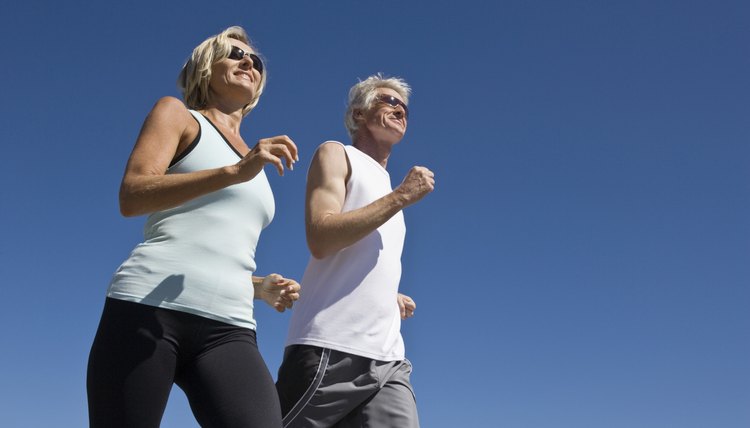What Percentage of Americans Exercise on a Daily Basis?

No one can deny the health benefits of getting regular exercise. Regular physical activity is a major piece of the healthy lifestyle puzzle, but many Americans are falling short. With longer hours at work, heavy reliance on cars for transportation, responsibilities of children and family life, and too many at-home entertainment options, it’s easy to let that workout or trip to the gym slip under the rug time and time again. If you fall into the less-than-active category, brush up on the recommendations and benefits of regular exercise and take measures to get moving.
Exercise Rates
According to a well-being survey of 335,050 adults done by Gallup polls, 51.6 percent of Americans report exercising three or more days per week for at least 30 minutes. Not surprisingly, demographics played a role in the likelihood of a person getting regular exercise. People who tended to exercise the most were aged 18 to 26, earned more than $90,000 per year, lived in western states and were male. Regardless of other demographics, obese people were the least likely to exercise regularly, with 41.8 percent exercising three or more days per week.
Exercise Recommendations
The American College of Sports Medicine, considered a top fitness authority, recommends that adults accumulate at least 30 minutes of moderate physical activity at least five days per week for basic fitness. Up the ante to vigorous exercise intensity and 30 minutes three days per week will get the job done. If you have goals beyond just achieving basic fitness, such as weight loss or sports enhancement, you’ll need to put in more exercise time. Additionally, people should round out a basic fitness routine with resistance and flexibility training at least two or three days per week.
Benefits
It’s not difficult to see the benefits of regular exercise on both physical and mental levels. The U.S Department of Health and Human Services acknowledges regular exercise as an effective way of preventing chronic illness such as high blood pressure, type 2 diabetes and coronary heart disease. Getting enough physical activity helps with weight management and prevents loss of muscularity and coordination due to aging. On a more short-term level, exercise enhances mood, reduces stress and contributes to a person’s overall feeling of well-being.
Tips
Since the amount of recommended exercise can be accumulated throughout the day, find little pockets of time to squeeze in more physical activity. Even if you only have 10 minutes to spare, walk around the building at work. Try riding your bike to do a nearby errand. While you wait for your child to finish soccer practice, jog around the park. Get up and play a fun game of backyard baseball. Give your four-legged friend some exercise with a stroll around the block. Recruit a relative, neighbor or friend to be your workout buddy to give you some accountability and make physical activities more enjoyable.
References
- Gallup.com: No Major Change in Americans' Exercise Habits in 2011
- ACE Personal Trainer Manual: American Council on Exercise
Writer Bio
Jilana Dennis is a health and fitness writer based out of San Antonio, Texas. Dennis is a nationally certified personal trainer with the American Council on Exercise and holds a B.S in exercise science from Illinois State University.
